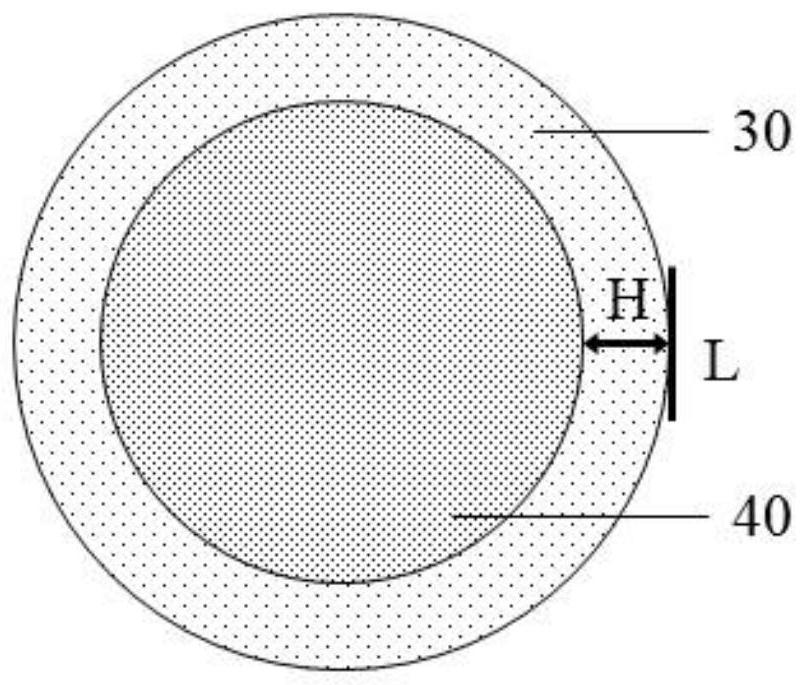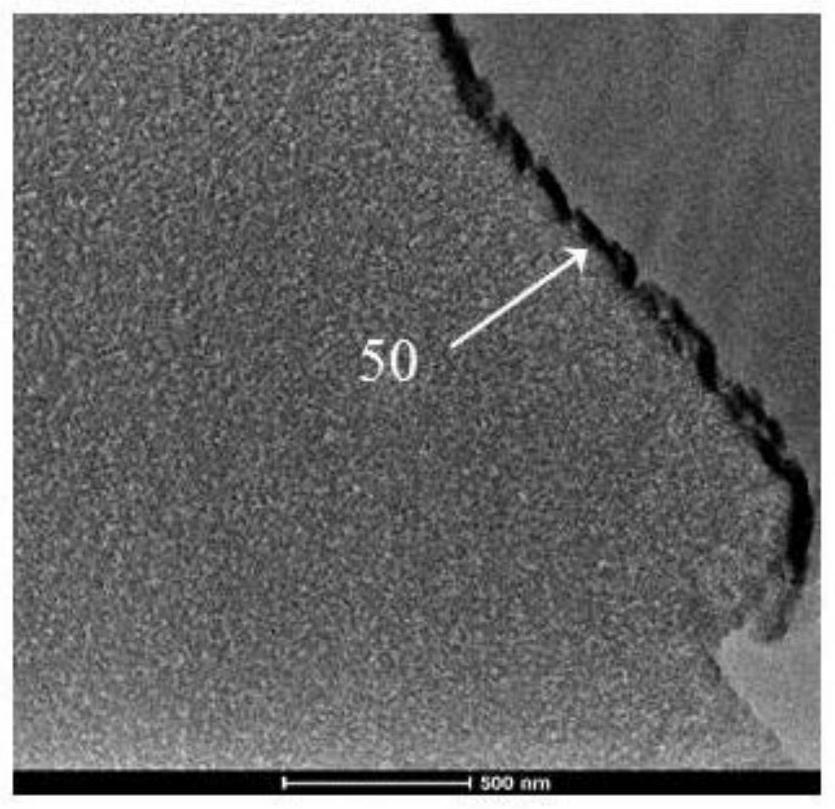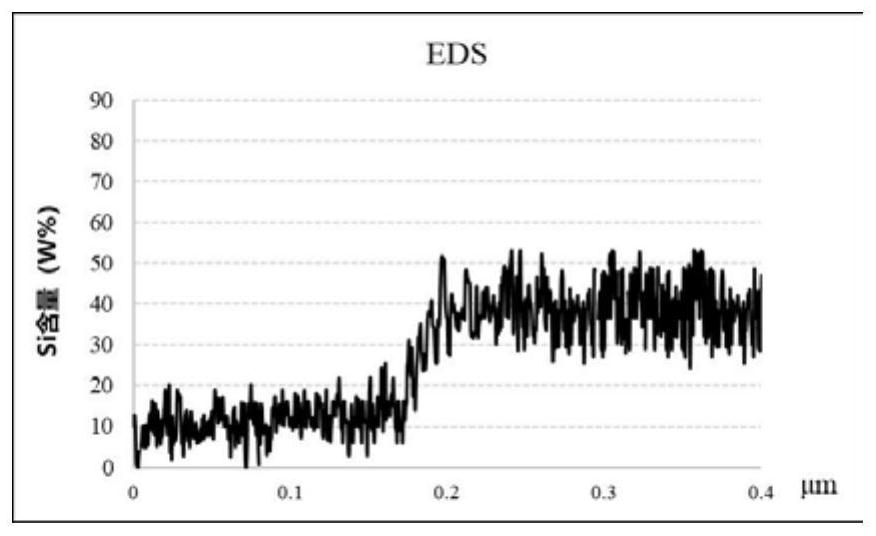Negative pole piece, electrochemical device comprising negative pole piece and electronic device
A technology of negative pole piece and negative material layer, which is applied in the field of electrochemistry to achieve the effects of improving cycle performance, improving interface stability, and improving expansion and deformation
- Summary
- Abstract
- Description
- Claims
- Application Information
AI Technical Summary
Problems solved by technology
Method used
Image
Examples
Embodiment 1
[0096]
[0097] Put a porous carbon material with a porosity of 41% in a closed silicon-containing gas reactor, heat it to 500°C and keep it warm for 4 hours, and after cooling, sieve and demagnetize to obtain the porosity α of silicon-based particles 1 30% silicon-based particles. Among them, the carbon content of the silicon-based particles is 60wt%, the silicon content B in the silicon-based particles is 40wt%, the distance is 0.04 μm, and the average particle diameter Dv50 of the silicon-based particles is 7.6 μm.
[0098]
[0099] Mix the negative electrode active material, graphite particles and nano conductive carbon black prepared above according to the mass ratio of 30:66.5:3.5 to obtain the first mixture; add the first mixture and the binder PAA into deionized water according to the mass ratio of 95:5 , prepared into a slurry with a solid content of 45%, and stirred evenly to obtain the first mixed slurry; the first mixed slurry was uniformly coated on one surfac...
Embodiment 2、 Embodiment 3
[0109] Example 2, Example 3, Example 4, Example 5, Example 6, Example 7, Example 8, Example 9, Example 10, Example 11, Example 12, Example 13, Example 14. In Example 15, Example 16, Example 17, Example 18, Example 19, Example 20, and Example 21, , , , , and are all the same as in Example 1, and the changes in relevant preparation parameters are shown in Table 1:
[0110] Table 1
[0111]
Embodiment 22
[0113]
[0114] 1) Put a porous carbon material with a porosity of 41% in a closed silicon-containing gas reactor, heat it to 500°C and keep it warm for 4 hours, and after cooling, sieve and demagnetize to obtain the porosity α of silicon-based particles 1 It is 30% silicon-based particles, wherein the carbon content of the silicon-based particles is 60wt%, and the silicon content B in the silicon-based particles is 40wt%. The distance is 0.08 μm, and the average particle diameter Dv50 of silicon-based particles is 7.6 μm.
[0115] 2) Add the silicon-based particles obtained in 1) to single-walled carbon nanotubes (SCNT) containing carboxymethylcellulose sodium (CMC-Na) dispersant and disperse for 2 hours until a uniform mixed solution is formed, and spray dry to obtain powder, crushed, and sieved with 400 meshes to obtain the negative electrode material, wherein the mass percentage of silicon-based particles: SCNT: sodium carboxymethyl cellulose is 99.75:0.1:0.15.
[0116]...
PUM
| Property | Measurement | Unit |
|---|---|---|
| particle size | aaaaa | aaaaa |
| specific surface area | aaaaa | aaaaa |
| particle diameter | aaaaa | aaaaa |
Abstract
Description
Claims
Application Information
 Login to View More
Login to View More - R&D Engineer
- R&D Manager
- IP Professional
- Industry Leading Data Capabilities
- Powerful AI technology
- Patent DNA Extraction
Browse by: Latest US Patents, China's latest patents, Technical Efficacy Thesaurus, Application Domain, Technology Topic, Popular Technical Reports.
© 2024 PatSnap. All rights reserved.Legal|Privacy policy|Modern Slavery Act Transparency Statement|Sitemap|About US| Contact US: help@patsnap.com










